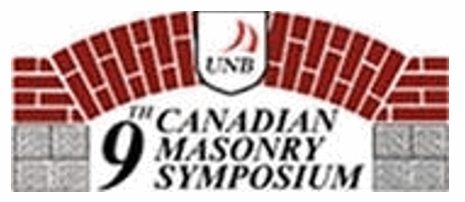James Halucha[1], Robert G. Drysdale2
- M.Eng. Candidate and Design Engineer, JNE Consulting Ltd., Hamilton, Ontario. 2Professor and Martini, Mascarin, and George Chair in Masonry Design, McMaster University, Hamilton, Ontario.
(Authors did not submit paper as expected)
ABSTRACT
Reinforced concrete block masonry walls were tested under combined biaxial tension and compression. The walls were constructed with a mortar joint inclination of 45 degrees, partially and fully grouted, and with total steel percentages ranging from 0.26% to 1.32%. Tension and compression loads were applied at a 1:1 ratio up to failure. Cracking, ultimate stresses, and associated deformations were recorded.
The tests were conducted to evaluate current design limitations on the effective use of higher percentages of steel in masonry shear walls. The allowable contribution of steel to shear resistance of masonry walls is limited in current codes and can be back calculated by determining shear resistance, Vm , of masonry. Furthermore, shear resistance formulas in most codes do not differentiate between the shear capacity of an uncracked section and a cracked section. Test results generally show that the limits imposed on the contribution of steel in most codes are often conservative and that in-plane shear resistance formulas should be reviewed.
Key Words: (no key words be submitted)
reinsw01



